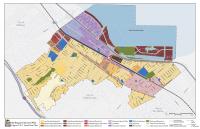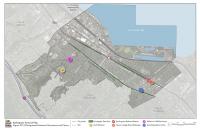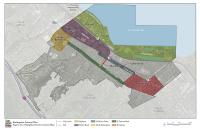Urban Forest and Streetscapes
Burlingame literally is a “green” community, with canopies of expansive, mature, and diverse “urban forests” created by many tree varieties along public streets, on private property, and within natural areas. The trees contribute significantly to the walkable nature of the city and neighborhood/district character. Trees also provide important health and economic benefits: they reduce pollutants in the air and water, provide shade and wind breaks, and can enhance property values. Trees provide connections to nature, offering habitat and refuge for wildlife. The following goal and policies focus on maintaining and enhancing Burlingame’s valuable public and private trees so they remain a prominent part of the community’s identity, culture, and history, while also providing shade, habitat, and beauty.
Goal: CC-2
Ensure that public and private trees are beautiful, healthy, and safe, and that they remain an integral feature of the community.
Discourage the planting of invasive vegetation, and encourage the removal of existing invasive vegetation through the development review process or through capital improvement projects, except for any trees listed or eligible for listing on historic registries. Examine all proposed removals on a case-by-case basis to ensure desired resources are not removed.
Preserve protected, historical, and other significant trees as part of the development review process through the following measures:
- Limit the adverse effect on the health and longevity of protected or other significant trees through appropriate design measures and construction practices.
- Encourage the preservation of native oak trees.
- Require appropriate tree replacement when tree preservation is not feasible.
- As a condition of new development, require, where appropriate, the planting and maintenance of both street trees and trees on private property.
- Protect trees during construction projects.
- Manage infrastructure to ensure that the placement and maintenance of street trees, streetlights, signs, and other infrastructure assets are integrated.
- Where urban development occurs adjacent to natural plant communities (e.g., oak woodland, riparian forest), ensure landscape plantings incorporate native tree species.
- Limit the number of new curb cuts for development projects to provide adequate space for protection of tree roots and for planting of new trees.


